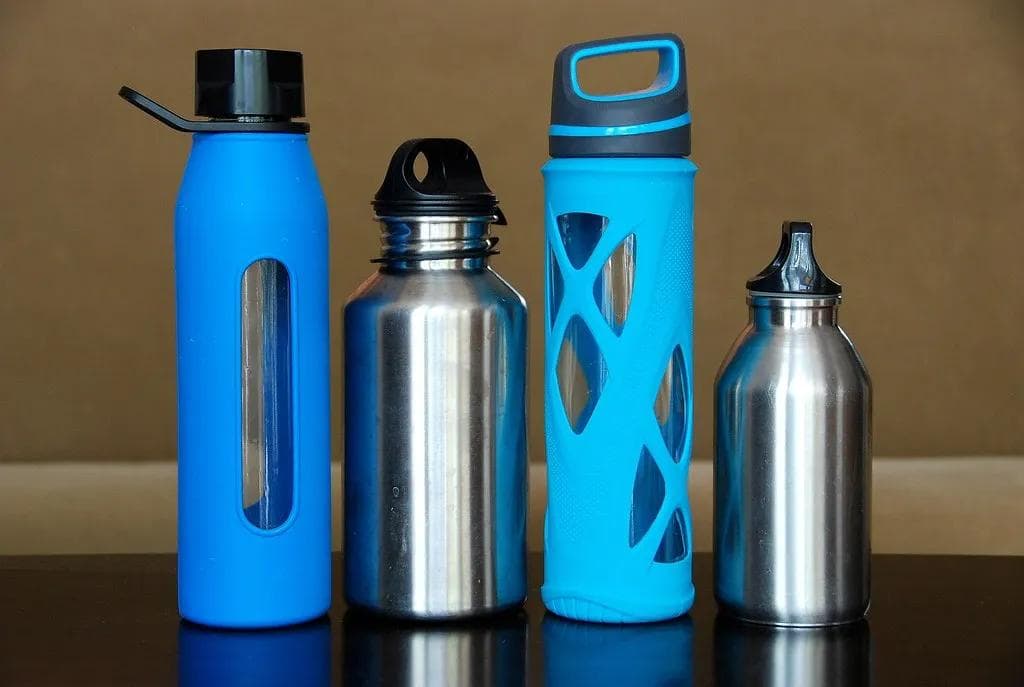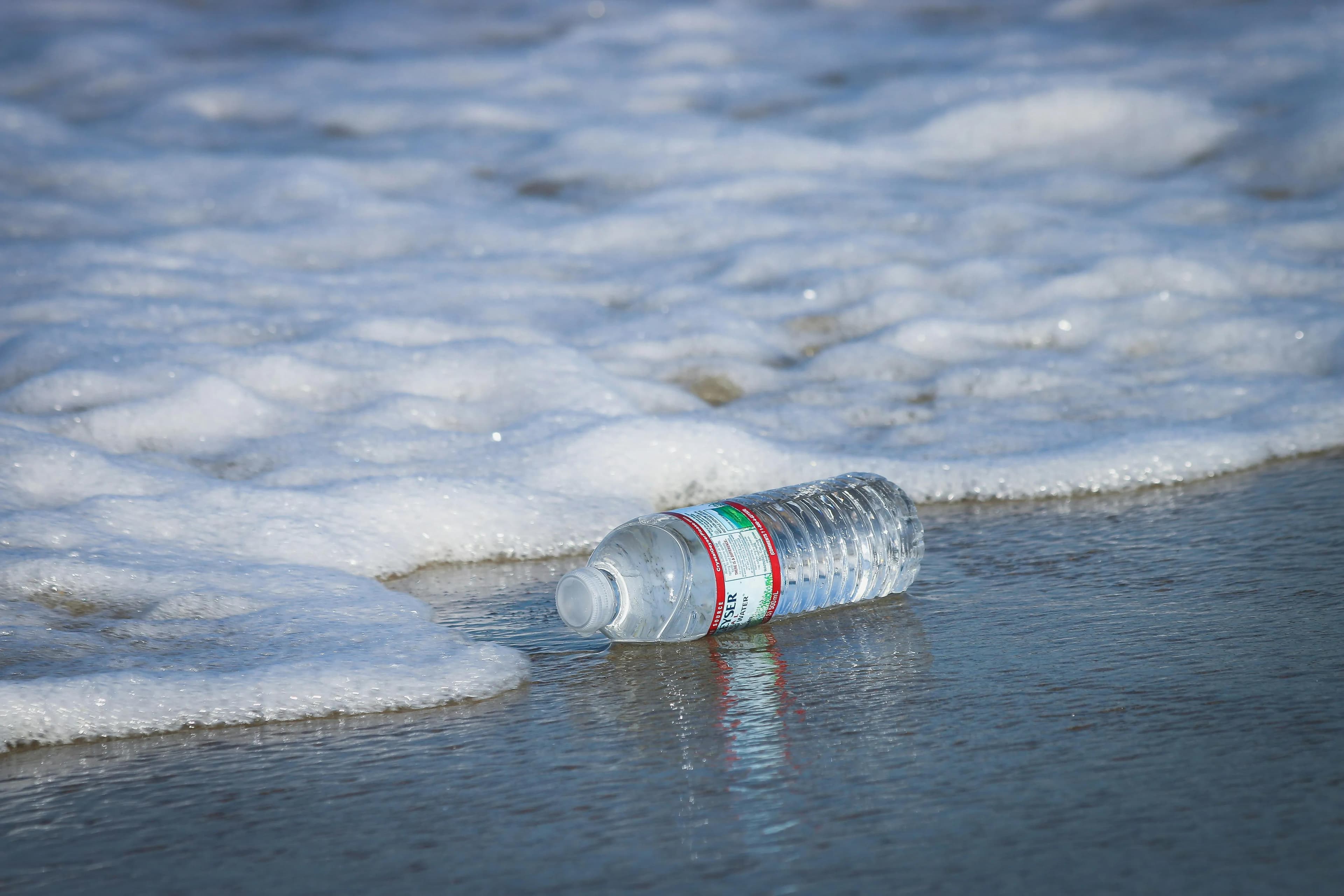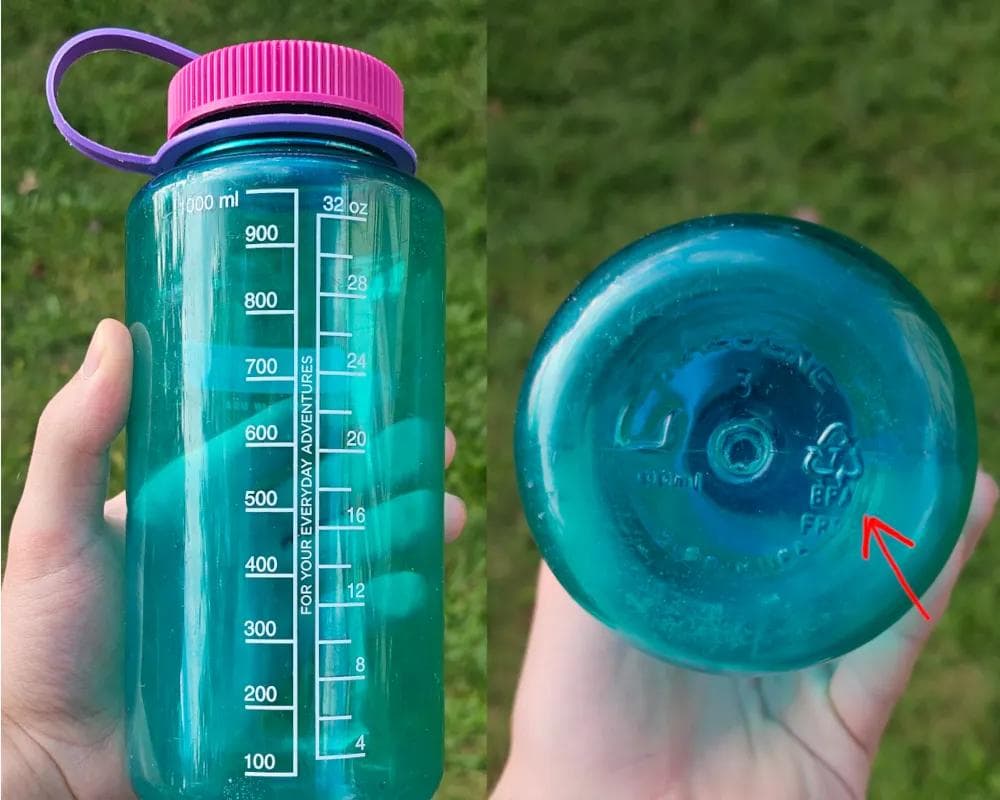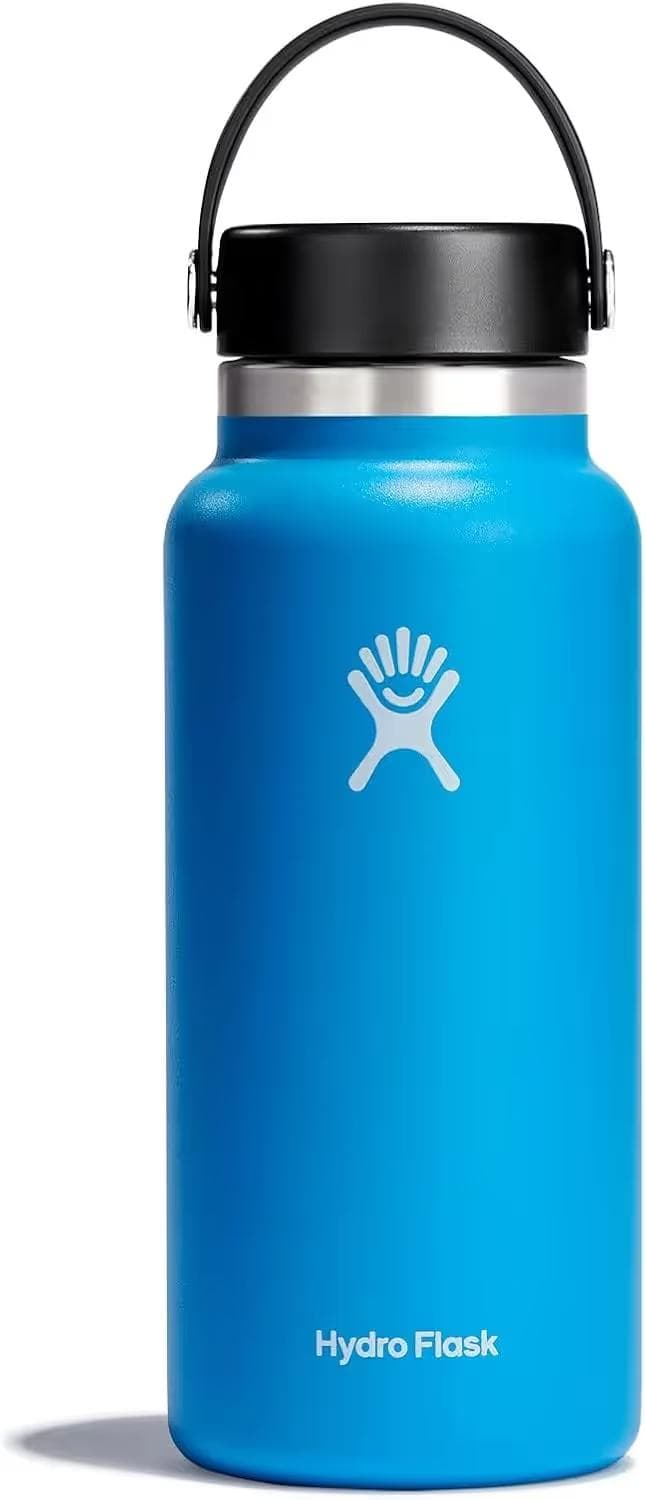The leading brand in lightweight travel and camping water bottles shed microplastics into your drinking water with every sip.
We have investigated the research articles and controversy on how Tritan-based Nalgene water bottles, although convenient, can be harmful to your health.
Additionally, we have found a good non-plastic replacement for Nalgene users who swear by the wide-mouth screw off lid design.
Your favorite plastic water bottle is shedding microplastics into your water every day.
Until I started researching microplastics, I had used Nalgene water bottles for years. They were incredibly reliable, came in stylish colors, and were relatively cheap making them a great choice for carrying around campus or on a backpacking trip. I particularly liked the wide mouth design and measurements on the sides of the transparent container, which made it easier to stay hydrated throughout the day.<br>
Unfortunately, as you might have read in our article on microplastics and their negative effects, these plastic bottles can shed microplastics into your water with use and even more so when exposed to high heat and direct sunlight.
Related Article
Are Nalgene bottles safe?
We do not recommend storing drinking water in any plastic water bottles because of their microplastic-shedding properties, including Nalgene water bottles made from plastic.
Naglene advertises their use of Tritan, a copolyester that has been in production since 2007, in most of their modern water bottle manufacturing as a “safe” replacement for their older BPA-based bottles.
While replacing BPA products was ethically a good step in the right direction, Nalgene is still using a form of plastic in their containers that can breakdown into our water.
Related Article
Related Article
Nalgene bottles are especially not dishwasher safe.
If you must absolutely use a plastic water bottle for technical reasons, such as reducing weight on long backpacking trips, then you should do everything you can to avoid cleaning them in a hot-water dishwasher cycle.
Similar to why you should avoid exposing plastic water bottles to direct sunlight, high heat and high pressure washing will accelerate the plastic breakdown into your drinking water, elevating your exposure to microplastics.
Replacing your beloved Nalgene bottle with non-plastic alternatives.
If you are looking for a similar volume container with screw on wide-mouth lid, we would recommend the Hydroflask 32oz Wide Mouth Insulated Stainless Steel Bottle. This Hydroflask as a detachable wide mouth lid with easy carrying handle of the likes of standard Nalgene bottles, and come in a wide variety of colors and sizes ranging from 20oz to 40oz.
One caveat to this specific bottle is the plastic lid construction. While not perfect, most of the bottle’s internal surface is non plastic, so it is already a step in the right direction.
However, if you are looking for more generally non-plastic water bottle options (including 100% completely plastic free bottles), visit our article on the topic.
Related Article
How to continue reducing your microplastic exposure.
When it comes to specifically ensuring your drinking water is safe even with a new non-plastic water bottle, be sure to invest in a proper reverse osmosis water filter to remove these microplastics from your tap.
Related Article
If you are interested in learning more about microplastics, their effects, and how you can effectively reduce or remove them from your daily life, check out our complete guide.
Related Article
Related

Top 8 plastic free water bottles to ditch microplastics in 2025
Discover the best plastic free water bottles that help you avoid microplastic ingestion. Learn about ways to get bottled water without microplastics with our alternatives for plastic water bottles.

Is there bottled water without microplastics?
Does bottled water have microplastics? Can you buy bottled water without microplastics? How to filter microplastics from water, and kinds of bottles are safe to store water in.

